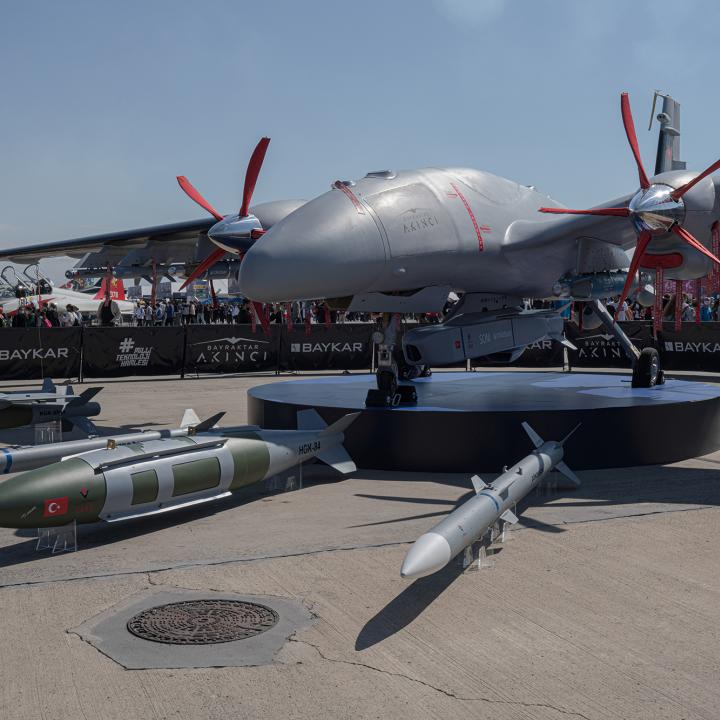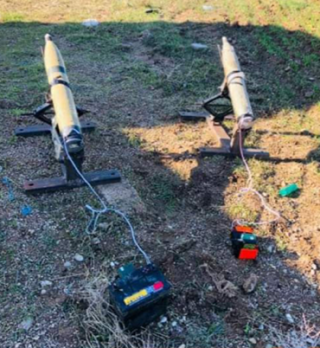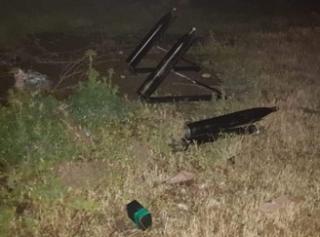
The Muqawama's Duel with Turkey

Turkish counterstrikes may have instilled caution in militia rocketeers, suggesting more attacks may come against U.S. and Kurdish targets instead.
Rocket teams fielded by Iraqi muqawama (resistance) groups have regularly targeted the Turkish base at Zilkan, located on high ground above the militia-controlled Bashiqa subdistrict in the Nineveh Plains east of Mosul. In April, the number of these attacks increased from the usual one to three strikes per month to five (see Figure 1).
This year has also seen a higher incidence of large truck-mounted multiple rocket launch systems used against Zilkan, including three cases in which whole “racks” or “mattresses" of large 122 mm rockets were fired. In these incidents, a very high proportion of rockets initiated (i.e., fired), suggesting well-maintained or new rocket fuel packs and professional system design and operation. Notably, 122 mm rockets have been used in an unusually high proportion of attacks on Zilkan, even though 107 mm rockets have sufficient range to strike the base.
In a very unusual circumstance, one attack (January 15) seems to have involved the smuggling of 107 mm rockets into Barazi village in the Kurdistan Region to fire at Zilkan from the northeast (Figure 2). Multiple reports of operatives probing the Kurdistan control line in the Nineveh Plains occurred hours earlier.
In some cases (like the January 2 salvo), it is difficult to see a Turkish action that might have triggered the strike; rather, it may simply have been part of the burst of muqawama activity related to the continued presence of U.S. forces following the December "deadline" for their withdrawal. (Forty rocket, drone, and roadside bomb attacks occurred this January, compared to a monthly average of 22 in the second half of 2021).
In other cases, potentially triggering Turkish actions occurred shortly before the rocket fire—for instance, the February 1-2 Operation Winter Eagle, which included thirty Turkish airstrikes on targets in Sinjar, notably on the Sinjar Resistance Units (YBS) gathered under the 80th (Yazidi) Brigade of the Popular Mobilization Forces (PMF). On February 3, a large rocket salvo was claimed by Ahrar Sinjar (Free Sinjar), a clear effort to tie the attack to Turkey’s Sinjar strikes.
So far, no Turkish forces have been killed in this year's attacks, in part because salvos appeared to be “aimed off” in many cases—that is, close enough to produce a convincing “performative” attack on a Turkish base, but without risking major escalation. This logic seems to have been lost on the Turks since April 15, when they began responding forcefully. The triggering event in that case was not a rocket strike on Zilkan, but an explosive drone that landed near the Kurdistan-operated oil export pipeline manifold at Peshkhabur, near the Iraq-Turkey-Syria tri-border. This attack was probably part of the escalating muqawama harassment of the Kurdistan Region’s energy sector, but it seems to have landed too close to Turkey or its outpost near Peshkhabur. Like the United States in 2021, Turkey may be especially sensitive to the introduction of enemy drones due to their potential accuracy and the (perhaps unintended) sense of escalation they convey.
Whatever the reason, Turkey struck back at the muqawama on April 15, hitting the launch site and headquarters used by the drone cell in northern Nineveh. These two sites were controlled by the 78th (Nawadir) Brigade of the PMF, an Arab Shammari tribal force under the influence of muqawama cells.
On April 24, Turkish drones over the Nineveh Plains promptly struck a launch vehicle below the Bashiqa Ridge that had just fired six 122 mm rockets at Zilkan. The Turkish strike caused no casualties as the rocket attack appeared to have been remotely triggered.
On April 26, seemingly in a follow-up to the above incident and with apparent intent to cause casualties, Turkish drones targeted a PMF compound in the village of Abu Jarbuah just outside Bashiqa, causing significant damage to the facility, destroying several parked vehicles, and inflicting an unspecified number of PMF casualties. Militia rocketeers had become more mobile by this point, striking from longer range and from within urban sanctuaries in Mosul, probably in order to complicate counterstrikes from Turkey. Yet Ankara chose to strike back indirectly by hitting accessible PMF bases near the frontline. Five days later, Turkish drones spotted an unfired five-rocket array set up in Fadhliyah in the Nineveh Plains, presumably to fire on Zilkan. The array was then seized by Iraqi security forces.
Although rocket attacks on Zilkan have paused since April 24, it is not yet clear whether the muqawama have backed off, as there have been longer interregnums in their attacks this year (e.g., the fifty-four-day gap in February-March). The coming weeks will probably provide strong indicators of whether the robust Turkish response policy has prompted a rethink among the muqawama and, at the very least, made them choose not to escalate to the killing of Turks.
The true test of any deterrent effect may come after the next major Turkish airstrike on PMF-linked forces in Sinjar. Some proportion of militia strikes could be diverted onto targets less likely to respond—namely, the U.S.-led coalition and the Kurdistan Region.







